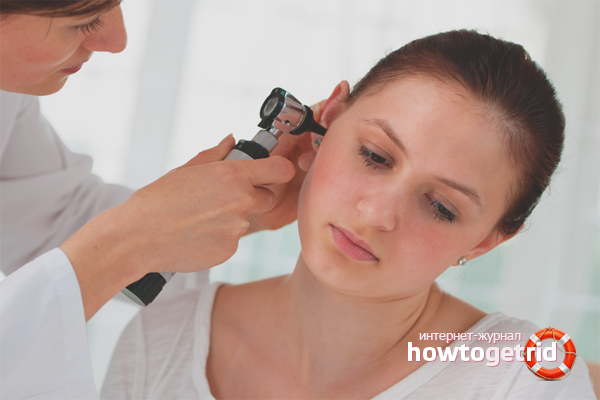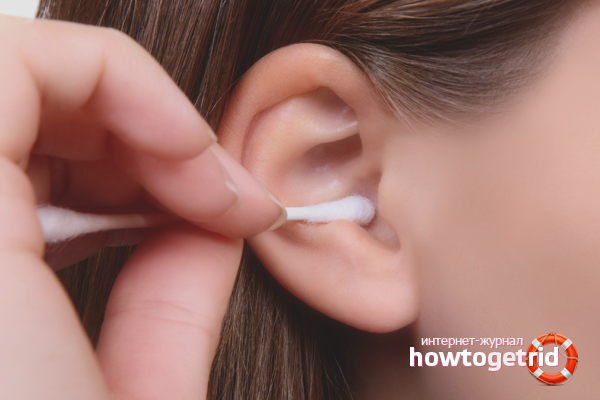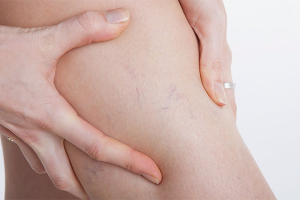The content of the article
Sulfur cork is an accumulation of sulfur in the ears that cannot be removed naturally. If it is contained in large volumes, then there is a possibility of a complete overlap of the auditory canal. The consequences of this is a decrease in the quality of human life, in addition, it often becomes the cause of weakness and ailments. Fortunately, all this can be corrected if appropriate measures are taken.
What is earwax
Earwax is a natural substance that is produced in the ears of all mammals, and man is no exception. It is widely believed that it indicates uncleanliness, but this is an erroneous opinion, since it is sulfur that keeps the ear canals clean.
How does she manage to do this? It filters out particles of debris, dust and chemicals, such as shampoo. With this method, it protects the ears from infectious diseases.
It is known that the ear canal is "final", that is, dead cells cannot be removed from it by erosion. Sulfur allows you to solve this problem, since it is produced by the sebaceous glands and contains cholesterol.
Causes of sulfur plug formation
In accordance with the statistics compiled by research doctors, two main reasons are identified that affect the formation of a cork consisting of sulfur. These include:
- Excessive sulfur formation.
- Individual anatomical features of the passage.
Often, people on their own cause cork formation, which is caused by their excessive concern for clean ears. Excessiveness is the cause of the opposite effect. It is known that the main task of sulfur is to protect the inner ear. The constant manipulations associated with its purification will become a signal to the body, after which this natural substance will be secreted in double, and sometimes triple, volume. The signal is given because sulfur serves as a protective component, without which the ear canal will remain unprotected.
The constant use of cotton buds as a means to cleanse the auricle becomes the reason that sulfur becomes denser and “moves” into the inner part of the passage. After a period of time after such cleansing procedures, a dense plug forms. According to the anatomical structure of the ear, it is designed so that sulfuric excess can be removed independently (for example, when a person eats food or pronounces words). That is why our task is to keep only the outer part clean, and trying to penetrate deep into the aisle can cause a cork.
Other factors causing its development are:
- Various diseases (eg, exam);
- High airborne particles of dust and debris;
- Constant use of headphones;
- Regular use of hearing aids.
Symptoms of Sulfur Cork
The formation of sulfur cork is accompanied by a number of characteristic features. These include:
- Congestion of the ear - this feeling does not last especially long after sleeping or taking water procedures
- Frequent noises;
- Feeling of giving one's own voice;
- The onset of inflammatory processes caused by blockage of the passage.
All this refers to specific symptoms, but cork can cause other symptoms. These include coughing, nausea, severe dizziness, and pain in the heart.
Attention! Often, an excess of sulfur does not make itself felt, therefore, a decrease in hearing ability occurs gradually and continues until a small clearance remains.
What can not be done when removing the cork
Self-treatment of ear plugs is welcome only in cases where the confidence in the diagnosis is 100%. Otherwise, treatment initiated can cause hearing impairment, loss of hearing and discomfort.
When disposing of a cork, it is strictly forbidden:
- Use sharp-pointed objects, such as toothpicks;
- Contraindication is diabetes;
- Perforation of the eardrum;
- It is forbidden to carry out treatment for inflammation of the auricle.
It is also worth noting that removal using a cotton swab causes it to enter the inside of the ear canal. This will aggravate the situation and cause pain.
How to get rid of sulfur cork at home
The formation of sulfur cork must be avoided, but if it already exists, then the topic of getting rid of it must be approached correctly. The most effective option is to contact an ENT doctor. The exceptions are situations where you are sure that the cause of the symptoms is sulfuric plug, then you can try to get rid of it yourself.
It is important that when removing the cork, you must adhere to the established algorithm, otherwise the treatment will not show results. Procedure:
- The first step is to soften the sulfur lump. For this purpose, it is necessary to prepare a pipette, cotton swab and softener (you can use glycerin or vegetable oil, less often used hydrogen peroxide). You need to warm up five drops of the product in your hands, then drop it into the ear located on top (you need to tilt your head). Burying the product, fingers of the other hand need to pull the edges of the auricle. After completing the procedure, a tampon must be placed in the passage.
- At the next stage, the sulfur plug must be washed, for which a syringe and three percent hydrogen peroxide are required. This procedure is carried out the next morning. Rinsing is required to be carried out lying on one side, so that the ear is located above. The auditory meatus must be filled with a medium until it is transfused. This completes the flushing, but in this position you need to stay for another fifteen minutes.
- The final stage involves the final disposal of the accumulation of sulfur. For this, a stream of warm water under pressure is needed, for which a shower hose can be used (first remove the nozzle spraying water). Flushing should be started from a short distance, constantly approaching the ear.
Recommendations of specialists:
- The first step is to soften the cork before bedtime;
- For its complete removal, it may require several procedures;
- If relief is not followed after 3-4 approaches, then it is worth contacting specialists.
To get rid of sulfuric cork, it is recommended to use alternative methods. They are proven tools that allow you to remove the cork in a short time without visiting the hospital. Let's consider them in more detail:
- Almond oil is an excellent remedy. For treatment, about seven drops will be required, which must be warmed up before use.
- Baked onion juice refers to effective methods. To get rid of the cork, four drops are necessary, after which a tampon, previously lubricated with petroleum jelly, is placed in the ear canal.
- Douching with water and salt is one of the most commonly used techniques. To do this, you need 50 ml of water at room temperature, in which you need to dilute a teaspoon of salt.
If the sulfur plug is too dense, then its removal is carried out by a doctor.The procedure takes place in two ways - by dry method or by washing the outer passage with the use of special tools.
Pharmaceuticals for ear plugs
To get rid of sulfur cork, you can refuse to use folk recipes by choosing pharmacy products. Drops are prescribed if the seals have a solid consistency. Used by:
- Hydrogen peroxide with a 3% concentration. The lumps of sulfur softened by it will be pushed out on their own.
- Remo-Wax. These drops are prescribed for use twice a month. It is forbidden to use them for pain, excretion of fluid or defects in the membrane. Drops prevent permanent cleaning of the ear canals with cotton buds.
- A-Tserumen. These drops are prescribed to remove seals in the ear canal, and can also be used as a preventative measure. The duration of use of the product is not limited.
- Auro or Drops - drops that allow you to dissolve the ear plug. They are appointed in accordance with the instructions. The active substance is carbamide peroxide.
Ear plug prevention
As noted above, sulfuric cork is often the cause of improper cleansing of the ears, so familiarity with the basic principles of ear hygiene will be the main preventive measure:
- Ear wax removal is only required from the auricle;
- It is allowed to clean the opening of the ear canal from the outside;
- If you suspect the formation of an ear plug, you should immediately visit a doctor.
An ENT doctor examines the ear canal, which reveals an excess of sulfur. When the diagnosis is approved, professional cleaning is carried out. It is recommended to pass it regularly to people suffering from excessive growth of hairs in the aisle, as well as to owners of devices that restore auditory function.
Often, sulfuric cork appears due to inflammatory diseases, so their treatment must be done in a timely manner. One of the preventive measures is the treatment of dermatitis and eczema. To avoid cork formation, it is necessary to constantly monitor the level of cholesterol in the blood.
Sulfur plugs must be removed immediately upon detection, otherwise the consequences can be sad. The doctor will correctly conduct the procedure, relieving the symptoms, but the seal can be cured on its own. For this action it is required to carry out regularly, without neglecting them. After getting rid of the cork, it is recommended to pay special attention to preventive measures in order to avoid relapse.
Video: what's in your ear: sulfur plug











Submit